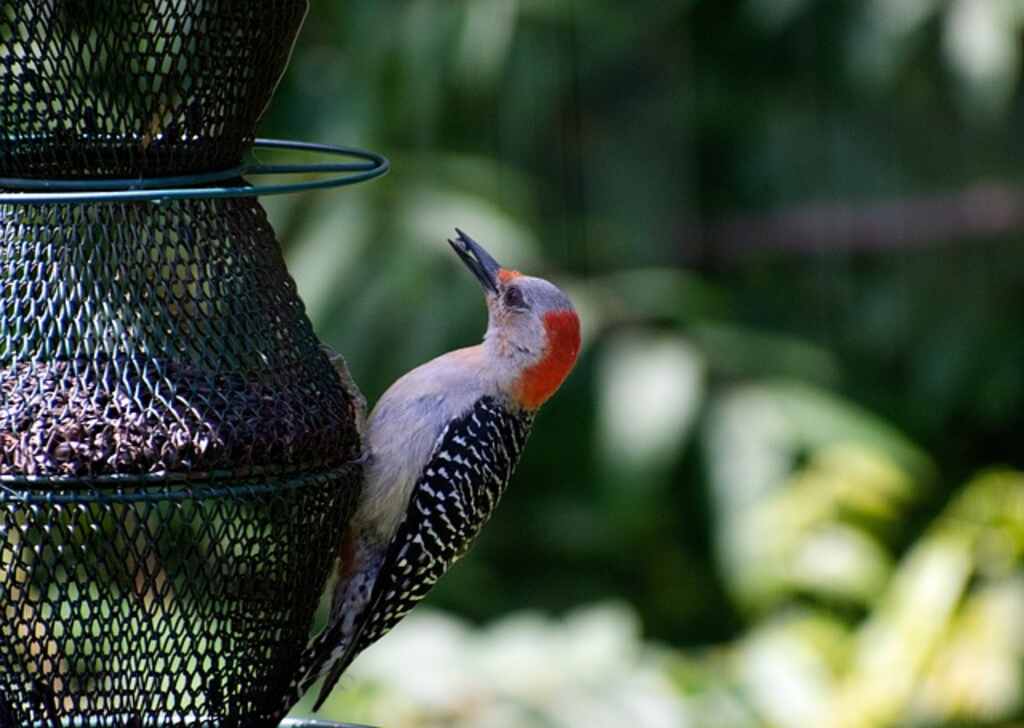Embark on a journey through Montana’s wilderness with our ultimate guide featuring 9 captivating woodpecker species! From the iconic Pileated Woodpecker to the elusive Lewis’s Woodpecker, Montana’s diverse landscapes provide a sanctuary for these fascinating birds.
In this comprehensive guide, we’ll uncover the distinctive characteristics, habitats, and behaviors of each woodpecker species, offering valuable insights for bird enthusiasts and nature lovers.
Table of Contents
Types of Woodpeckers in Montana
Downy Woodpecker
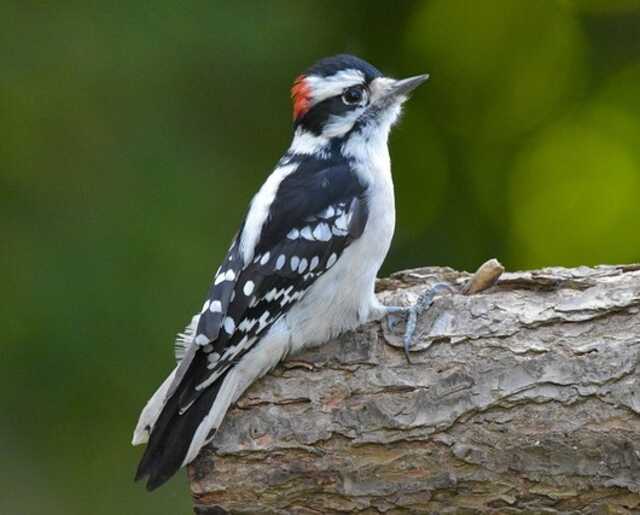
- Length: 5.5-6.7 in (14-17 cm)
- Weight: 0.7-1.0 oz. (21-28 g)
- Wingspan: 9.8-11.8 in (25-30 cm)
- Scientific Name: Picoides pubescens
- Frequency of Occurrence: 12.08% (Statistic by: eBird)
- Maps: Range Map – Sightings Map
- Sounds: Calls and songs
- Where To Find Them: The Downy Woodpecker is a small woodpecker that can be found in certain locations in Montana. These areas include the Madison and Gallatin Valleys, as well as parts of the Bitterroot Valley. The Downy Woodpecker is a common bird in these areas, and can often be seen drumming on tree branches.
- How to Attract: Downy Woodpeckers eat insects, but will also feed on fruit. Here are some tips on how to attract and feed a Downy Woodpecker: Place suet or black oil sunflower seeds around your bird feeder. These types of seeds are especially tasty to birds. Feed your bird mealworms, which they will love. Berries and fruits make great snacks for downy woodpeckers as well.
Description: Downy Woodpeckers are small birds that inhabit the forests of North America. They are members of the family Picidae and are classified under the order Passeriformes. Downy Woodpeckers are one of the most common woodpecker species in North America, and can be found throughout most of Canada and the United States.
Downy Woodpeckers have a range that extends from southern Canada, through the eastern United States, to Central and South America. These birds feed primarily on insects, but will also consume small vertebrates if they find them available.
Related: How to Attract Downy Woodpeckers to Your Yard? (Easy!)
Hairy Woodpecker
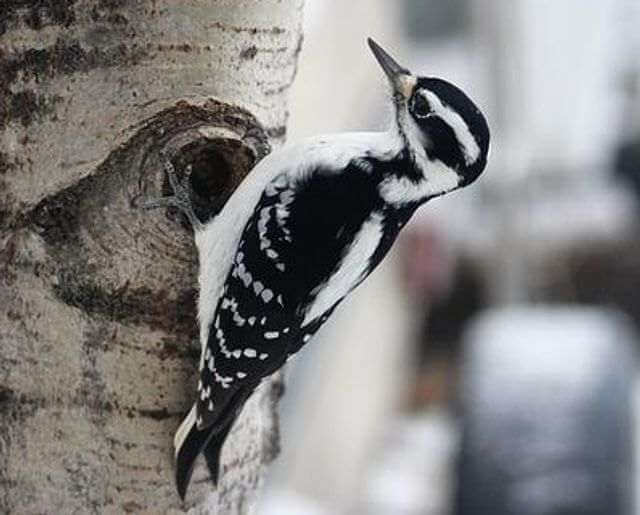
- Length: 7.1-10.2 in (18-26 cm)
- Weight: 1.4-3.4 oz. (40-95 g)
- Wingspan: 13.0-16.1 in (33-41 cm)
- Scientific Name: Picoides villosus
- Frequency of Occurrence: 6.94%
- Maps: Range Map – Sightings Map
- Sounds: Calls and songs
- Where To Find Them: The Hairy Woodpecker is a common sight in many areas of Montana. These birds can be found in most parts of the state, but are especially common in the Rocky Mountain and Great Plains regions. In general, they prefer to live near large trees, but will also make use of nearby tall shrubs and even telephone poles for nesting.
- How To Attract: One great way to attract a hairy woodpecker is by offering them suet. This type of food is high in energy and will help keep these birds active. Another great way to attract a hairy woodpecker is by giving them black oil sunflower seeds. These seeds contain proteins and other nutrients that will help the bird stay healthy. Lastly, give the bird some peanut butter as an added bonus.
Description: The Hairy Woodpecker is a small woodpecker that can be found in the northern and central regions of North America. They have a range that extends from Newfoundland to New Mexico, and also inhabit parts of Central America and South America. The Hairy Woodpecker is most common in the eastern half of their range, but they are also present in the west.
They prefer areas with trees or large branches, but will also inhabit nearby shrubs and other trees. The Hairy Woodpecker feeds primarily on insects, but will also eat fruit if available.
Pileated Woodpecker
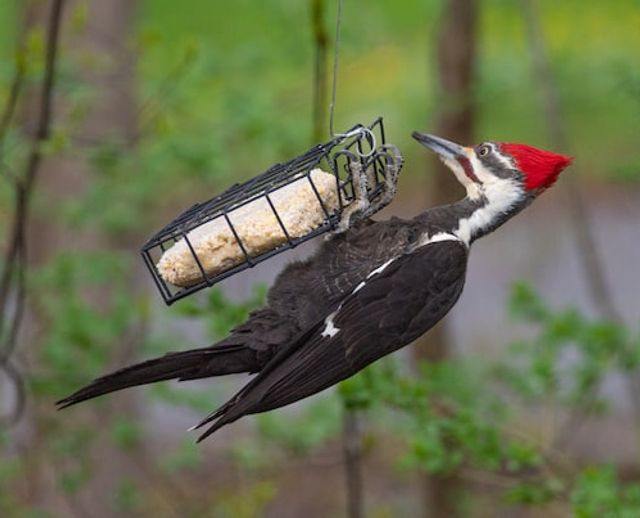
- Length: 15.8-19.3 in (40-49 cm)
- Weight: 8.8-12.3 oz. (250-350 g)
- Wingspan: 26.0-29.5 in (66-75 cm)
- Scientific Name: Dryocopus pileatus
- Frequency of Occurrence: 3.30%
- Maps: Range Map – Sightings Map
- Sounds: Calls and songs
- Where To Find Them: Some locations that the woodpecker can be found in are the foothills of the Rocky Mountains, the eastern slopes of the Rockies, and along the Missouri River.
- How To Attract: The key to attracting this bird is to provide it with food items that it prefers, such as suet, black oil sunflower seeds, peanut butter, and mealworms. Fruits also make good additions to a bird feeder’s diet.
Description: The Pileated woodpecker ranges from the Canadian Arctic to Central America, and south to Mexico. They are common in the eastern United States, but rare west of the Mississippi River. The pileated woodpecker prefers deciduous trees with alot of dead wood to find insects and fruit. They also feed on acorns, nuts, and seeds.
The pileated woodpecker inhabits mainly old-growth forests, but they have been known to nest in areas such as second growth forests. They also forage in urban gardens and orchards. The diet of the pileated woodpecker includes insects, fruit, and nuts.
Related: How to Attract Pileated Woodpeckers to your Yard (Fast)
Lewis’s Woodpecker

- Length: 10.2-11.0 in (26-28 cm)
- Weight: 3.1-4.9 oz. (88-138 g)
- Wingspan: 19.3-20.5 in (49-52 cm)
- Scientific Name: Melanerpes lewis
- Frequency of Occurrence: 1.27%
- Maps: Range Map – Sightings Map
- Sounds: Calls and songs
- Where To Find Them: One area where you are likely to find Lewis’s Woodpecker is along the Missouri River near Glacier National Park. This area has large amounts of dead wood, which the birds use as their homes and nesting sites. Another good location for seeing this bird is along Highway 287 near Great Falls. Here, there are many trees that have been damaged by logging activities, which provides habitat for these birds.
- How to Attract: Try feeding them peanuts or sunflower seeds instead. Black oil sunflower seeds are especially popular with this bird, as they contain a good amount of essential fatty acids, which help keep their feathers healthy. In addition, mealworms are another great option for bird feeders – not only do they provide protein and other nutrients, but they’re also fun to watch! Fruits are also a great way to attract woodpeckers – offer them something fresh and attractive every day.
Description: For most of the eastern United States, the Lewis’s Woodpecker is only a occasional visitor, making an appearance in spots such as the Appalachian Mountains and the Ozark Mountains. However, in certain parts of its range it can be quite common. In fact, according to BirdLife International, this woodpecker is one of North America’s most common species.
Aside from its range, another thing that varies greatly depending on where you are is their habitat. In the east, Lewis’s Woodpeckers prefer areas with lots of trees and thick understory; however, in the west they favor drier forests with more open spaces. When it comes to their diet though, both east and west have this bird eating mainly insects but also fruits when available.
American Three-toed Woodpecker

- Length: 8.3-9.1 in (21-23 cm)
- Weight: 1.6-2.4 oz. (44.8-67.9 g)
- Wingspan: 14.6-15.3 in (37-39 cm)
- Scientific Name: Picoides dorsalis
- Frequency of Occurrence: 0.5221%
- Maps: Range Map – Sightings Map
- Sounds: Calls and songs
- Where To Find Them: The American Three-toed Woodpecker is a rare find in the state, and as a result, it can be difficult to locate these birds. This bird can be found mainly in the mountainous regions of Montana, but has also been spotted in areas near the Columbia River.
- How to Attract: One way to attract the American Three-toed Woodpecker to your yard is to feed it suet. You can also provide peanuts, black oil sunflower seeds, peanut butter, mealworms, and fruits as snacks.
Description: The American three-toed woodpecker is a small, brown and black bird that inhabits the eastern United States. It is the only species of woodpecker in North America that primarily eats insects. The American three-toed woodpecker’s range extends from southern Canada to the Gulf of Mexico and west to Texas.
This bird prefers open woods with plenty of tree branches and holes to build its nests. It feeds on insects such as ants, beetles, crickets, grasshoppers, and caterpillars, which it hunts by pecking at tree bark.
Black-backed Woodpecker
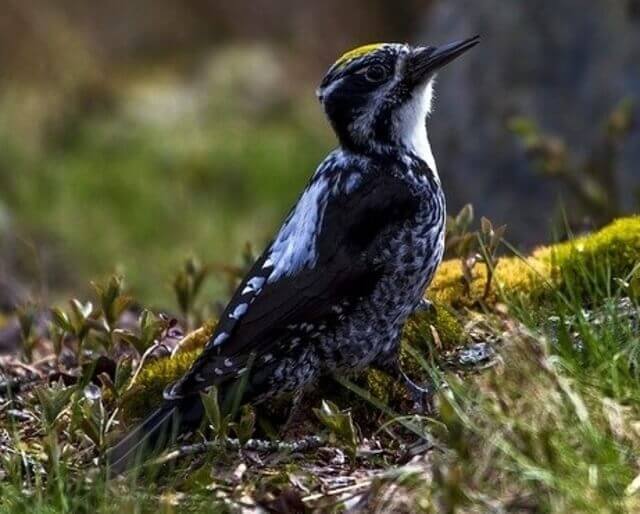
- Length: 9.1 in (23 cm)
- Weight: 2.1-3.1 oz. (61-88 g)
- Wingspan: 15.8-16.5 in (40-42 cm)
- Scientific Name: Picoides arcticus)
- Frequency of Occurrence: 0.1664%
- Maps: Range Map – Sightings Map
- Sounds: Calls and songs
- Where To Find Them: Though they are fairly rare in Montana, the Black-backed Woodpecker can be found in a few select locations throughout the state. The bird is typically most common in areas with tall trees, such as the Bitterroot Mountains and the Rocky Mountains. If you’re lucky enough to spot one of these charismatic birds while visiting Montana, be sure to take pictures and share them with your friends!
- How to Attract: If you’re looking to attract black-backed woodpeckers to your yard, start by providing them with plenty of food sources. These birds are omnivorous and will eat a variety of things, including insects, fruit, and seeds. Try to give them access to areas where they can find high-energy foods like nuts and seeds. You can also feed them suet.
Description: The Black-backed Woodpecker is a common bird found throughout North America. This species of woodpecker has a range that extends from southern Canada to the Gulf of Mexico, as well as all of the major eastern states. The Black-backed Woodpecker is a bird of open areas such as forests, savannahs, and farmland.
They are also found in urban areas, where they can find decaying wood or other places where they can build their nests. The diet of the Black-backed Woodpecker includes insects, small vertebrates, and fruit.
Red-headed Woodpecker
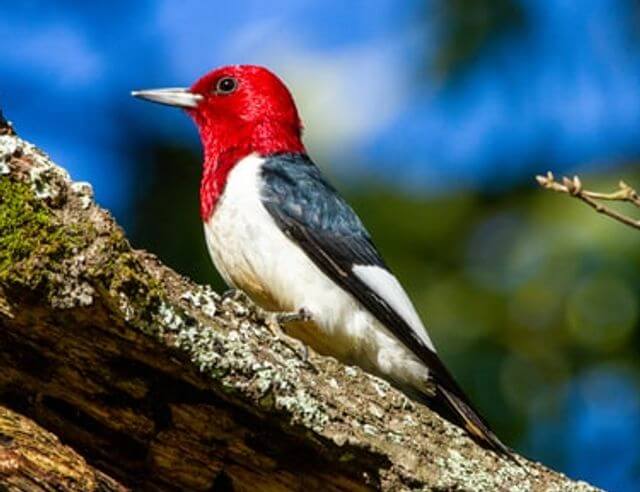
- Length: 7.5-9.1 in (19-23 cm)
- Weight: 2.0-3.2 oz. (56-91 g)
- Wingspan: 16.5 in (42 cm)
- Scientific Name: Melanerpes erythrocephalus
- Frequency of Occurrence: 0.1567%
- Maps: Range Map – Sightings Map
- Sounds: Calls and songs
- Where To Find Them: The Red-headed Woodpecker is a rare bird in Montana. They are typically found in the Rocky Mountains. The best places to find them are in the mountains near Helena and Great Falls, but they have also been seen around Polson and Dillon. The woodpecker can be found in areas with tall trees, such as ponderosa pine and Douglas fir, as well as hilly woodlands.
- How to Attract: One way to attract red-headed woodpeckers to your yard is to provide them with a variety of food options. Black oil sunflower seeds are a favorite of these birds, and they will also eat mealworms or suet. If you have access to these types of food items, make sure to provide them regularly.
Description: The Red-headed Woodpecker is a common bird in the east and midwest United States. This woodpecker ranges from the Great Lakes region to New England, but is most common in the eastern half of its range. The Red-headed Woodpecker prefers deciduous and mixed forests, but will also occupy coniferous forests.
They are typically found near water sources such as ponds or streams. The Red-headed Woodpecker feeds on insects, primarily beetles and caterpillars, but they also eat other small birds and mammals.
Related: Interesting Red-Headed Woodpecker Facts (Explained)
Red-bellied Woodpecker
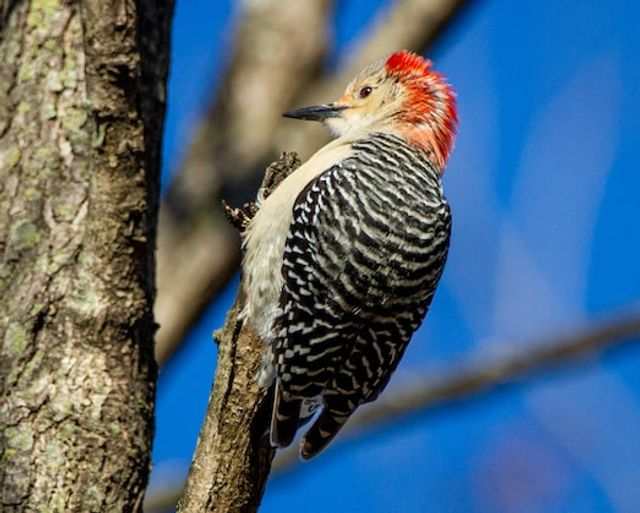
- Length: 9.5 in (24 cm)
- Weight: 2.0-3.2 oz. (56-90 g)
- Wingspan: 13.0-16.5 in (33-42 cm)
- Scientific Name: Melanerpes carolinus
- Frequency of Occurrence: 0.0026%
- Maps: Range Map – Sightings Map
- Sounds: Calls and songs
- Where To Find Them: The red-bellied woodpecker is an uncommon bird in Montana. It is found mainly in the Big Sky Country and the Jefferson River Valley. Locally, it is most common in the Lewis and Clark National Forest and the Beartooth Mountains.
- How to Attract: You can attract the Red-bellied Woodpecker by providing them with bird feeders that have mealworms or suet. You should also provide water dishes so that they can drink.
Description: The Red-bellied Woodpecker is a common woodpecker found throughout most of North America. They have a range that extends from southern Canada to central Mexico and south to Guatemala. They are also found in the Caribbean and Central America.
The Red-bellied Woodpecker is a bird of the coniferous forests, but has been spotted in other habitats such as mixed deciduous and pine forests, as well as suburbs. The red-bellied woodpecker is a primarily insectivorous bird, eating insects, ants, spiders, wood-boring beetles and other small creatures.
Related: How to Attract Red-bellied Woodpeckers to your Yard?
White-headed Woodpecker
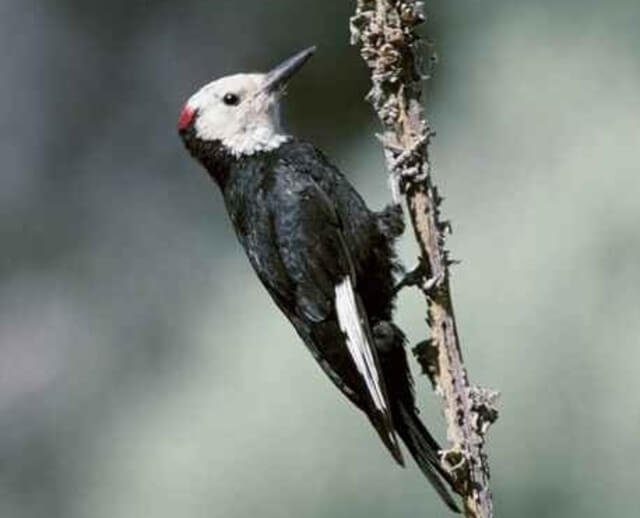
- Length: 7.9-9.1 in (20-23 cm)
- Weight: 1.9-2.3 oz (55-65 g)
- Wingspan:16.9 in (43 cm)
- Scientific Name: Picoides albolarvatus
- Frequency of Occurrence: 0.0001%
- Maps: Range Map – Sightings Map
- Sounds: Calls and songs
- Where To Find Them:. The White-headed Woodpecker is one of the rarest woodpeckers in Montana. It can be found only in the eastern part of the state, from east of Great Falls to just west of Helena. The best place to find them is in the Bitterroot National Forest.
- How to Attract: Attracting a White-headed Woodpecker to your feeder is not difficult, but there are a few things you can do to make sure they show up. First, set up a feeder that is easy for them to see and access. Next, provide fresh, nutritious food in the feeder such as mealworms or peanut butter suet. Finally, keep your feeder clean and free of debris, so the woodpeckers know it is safe to come and eat.
Description: The white-headed woodpecker is a common bird in the North American forests. It ranges from British Columbia through southern California, and prefers pine forests. This bird is a mostly black, medium-sized woodpecker with a long bill.
The male has a bright red crown and a white head, with a white stripe on each wing. The white-headed woodpecker is a skilled aerialist, rapidly flapping its wings to fly long distances. They have a diet that consists of insects, primarily termites, wood-boring beetles larvae and ants.
Related Post: 40 Common Backyard Birds in Montana 2022 (A Full Guide!)

